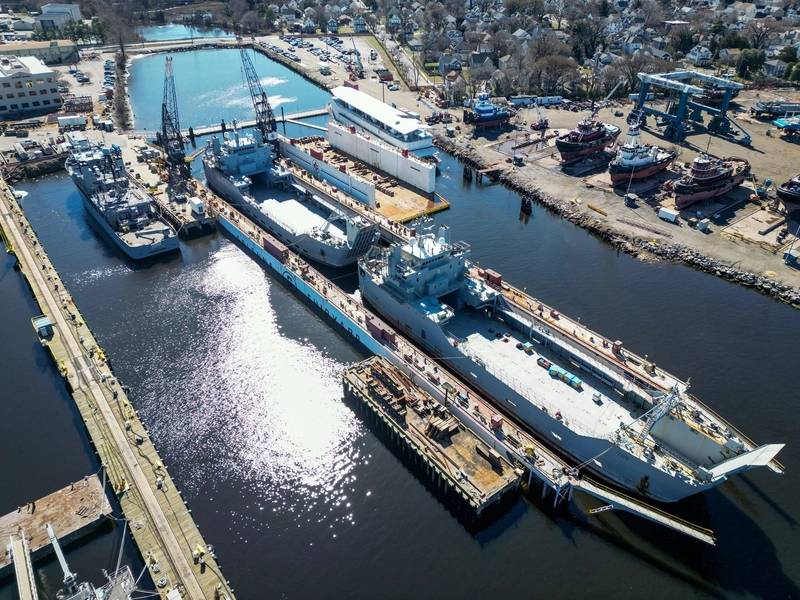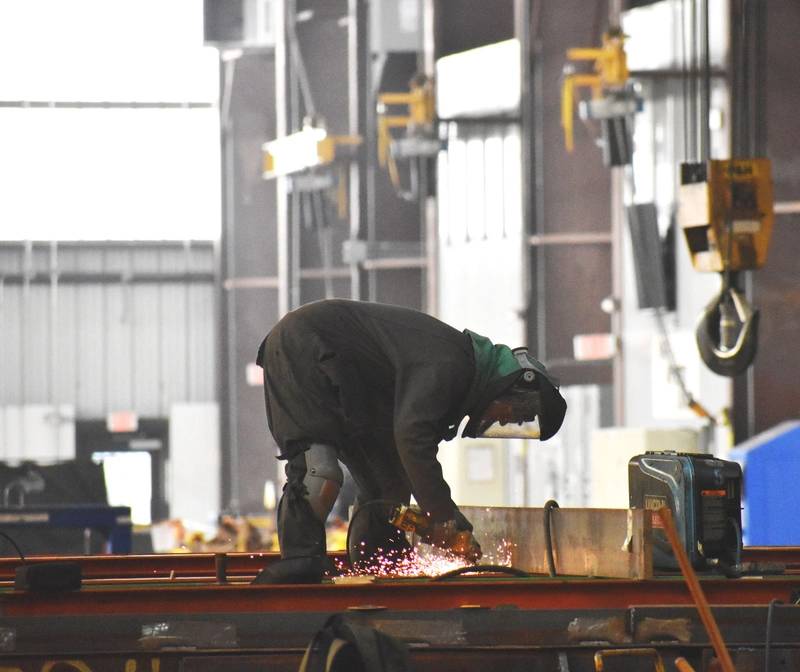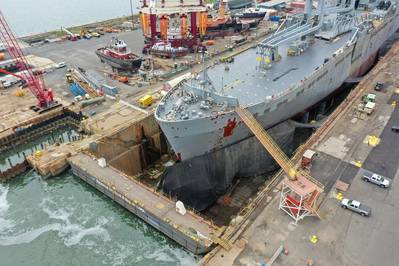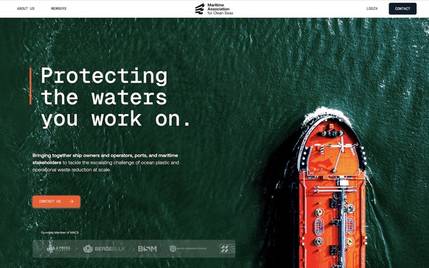Maritime Dominance Begins with U.S. Ship Repair and Conversion
Dating back to the year 1786, Thomas Jefferson wrote to a member of the Continental Congress on the importance of free press keeping government in check. He was quoted as saying if he had a choice between “a government without newspapers or newspapers without a government, I should not hesitate a moment to choose the latter.”
The basis of the statement being that the government is the opinion of the people. It is not in the current U.S. shipping reporting.
The first “newspaper” shipbuilding announcements consisted of new legislation capable of delivering us back to our former maritime dominance. Before that legislation reached the Senate floor, the next series of reports announced the first U.S.-built LNG vessel in 45 years at Hanwha, followed by the largest container ship under U.S. flag, built 2013 in Daewoo, South Korea entering the MSP and finally $6.2 billion dollars to support the maintenance of the MarAd RRF fleet. A second report indicates the $6.2 billion has been awarded to seven companies with 10-year commitments.
The “U.S.-built” LNG carrier will meet its own problems going down the road as government defines “U.S.-built”. The largest U.S. flag containership reflag has nothing to do with returning U.S. shipbuilding to dominance. Those examples aside, the Secretary of Transportation’s announcement of $6.2 billion to maintain and repair the idle RRF fleet opens a new discussion. Is the funding an understanding of where the problem with U.S. shipbuilding & repair actually stands? Or are we reading newspapers without government.
Focus on the Supply Chain
The problem is not our shipyards or the capable labor it employs. It is the U.S. supply chain. It is not a question that we can build ships. It is a collection of problems that rise from material costs and availability, a system based upon “just-in-time inventory” and a requirement in many programs for 100% American made. All of these components work towards extended material delays, the lack of U.S. manufactured goods to meet the demand and an unreliable logistics chain supporting new construction.
We have been swimming in that swamp for a long time trying to keep our heads above the water.
The quickest way to reestablish our manufacturing base and accomplish the White House goals is understanding the importance of our repair yard capacity.
U.S. ship repair and maintenance defines sustainability and supply. It also maintains a skilled workforce. Whether it be a return to commercial service or the Navy’s battlefield at sea, the ability to return an asset back into the market on schedule and ready to serve is the first secret to success.
Not one piece of legislation, media report or EO report addresses maintenance and repair in the U.S shipyards. All are fixated on new construction for all of the wrong reasons. Yet most of us in shipbuilding understand the majority of top tier foreign yards in South Korea, Japan and China started as repair yards.
 Image courtesy Colonna's Shipyard
Image courtesy Colonna's Shipyard
Ship Repair '101'
Beyond that statement understand that most of the U.S. yards that combined new construction and repair, understand that repair pays the bills and is profitable. New construction is not. And there are simple reasons why. If you understand shipbuilding.
A vessel entering a repair yard has a history. A full set of design and production drawings, reviewed and approved by Class, the USCG or NAVSEA identifying all of the technical data necessary to repair, rebuild or modify the vessel prior to entering the repair facility. The repair and maintenance time period is defined by the USCG and ABS. It provides the manager time to research his supply chain and determine whether the vessel is maintenance sustainable. If not – modifications to the repair specification and vessel need to be made and in some cases foreign material supply required.
In U.S. new construction we do not follow those procedures. Most of the programs enter into construction without a Class reviewed or completed design. Few if any reach production drawings prior to contract. This is one of the major reasons for “change orders” and schedule delays. This problem also exists with Navy construction. During past decades of the 1970s and ‘80s, the Navy produced its own designs and the delays and cost overruns were not as frequent. The leading task was the ship. The Navy reduced its “in-house” naval architecture and engineering staff from roughly 1,200 to 300 post-Soviet cold war and turned to chasing new technologies and weaponry as a result of “shock & awe” in Desert Storm. This change in direction has also affected the Navy’s maintenance capability.
It is no different in global shipbuilding. The foreign yards produce their own designs and with that easily follow through with production and they understand their own standards. The U.S. yards rely on designs provided by outside sources and in our antiquated competitive process, your guess is as good as mine and who will eventually build. The Far East yards employ their own naval architects – hundreds. And with that the risk of “change order” or delivery delays are mitigated. It is a proven design.
Make no mistake about it, with the cost of new construction in the United States, our repair capability to complete replacement of outdated machinery, large steel renewals and upgraded coatings will work to achieve existing tonnage life extension periods well beyond the vessel’s next drydock. This is the transition period needed during the next decade to rebuild our shipyard capacity for new construction.
$6.2B and the RRF
The Secretary of Transportation has given us the opportunity to support and rebuild our repair capacity and $6.2 billion US dollars has been provided to make it work if it is done correctly within the MarAd RRF program. Yes, $6.2 billion U.S. dollars within a program of vessels that are idle and wait orders to serve.
The average age of the RRF fleet is fifty-one (51) years. The last true “activation” was Desert Fox, Desert Storm and Desert Freedom. The after-action reports describing the failures of the program from both activation and operation resulted in additional foreign tonnage being flagged in. “Reserve Operating Status” was developed where selected tonnage was made available with a reduced operating crew, at selected berths with developed maintenance procedures to make them available between 48 and 76 hours. It was a step in the right direction. We rebuilt and flagged three RoRos during that program upgrade.
In 2019 Marad opened an unannounced “turbo-activation” to test the system. Public reports indicated significant failures to operate or actually meet the “readiness” requirement. Keep in mind this $6.2 billion now speaks to maintaining that RRF which is now six years older than the last activation and those public reports attacked the age of the fleet at that time. This is a lesson-learned opportunity.
Begin with a complete round table analysis of what vessels within the 51 is:
- useful to Transcom
- structurally sound and sustainable to operate for the transition period and
- economically feasible to meet extended conversion and maintenance to meet those simple requirements.
Rebuild the Fleet: Step-by-Step
Once the analysis is complete, scrap the remaining tonnage. And we know the cost of that scrapping alone will affect the current funding. That said it reduces future fleet maintenance costs and provides the program with vessels that perform the mission.
With the vessel identifications complete, develop the specifications to complete steel and coating repairs for a 10-year life extension with extensive ultrasonic gauging and coating failures reports. Next research propulsion capability. A vessel may qualify due to its cargo capability but not with its steam propulsion.
The same applies if the stern section is capable but the cargo capability is out dated. Identify if the stern section can be removed and replaced with an updated and current propulsion system – hybrid, diesel electric, medium speed or slow speed diesel.
Work first with US manufacturers – Cummins, John Deere, Wabtec, Fairbanks Morse Defense – most to confirm a US supply chain is available and sustainable – or not. All of us that have been involved with activations and Transcom understand the crisis of having equipment that cannot be supported. It is our latest experience with commercial conversion, that the supply chain is near non-existent if foreign supply is not considered. This is the data we need to feed the manufacturing base with the U.S. build requirement in new construction.
The upgrades continue with cabin and hotel capability to attract seafarers. Navigation and machinery upgrades that consider crew compliment automation and autonomy as we work through our labor issues. Dual use commercial/military operations during the transition period can work towards operating the vessels rather than idling them to confirm modifications.
As those specifications and modifications are developed develop RFPs to complete the shipyard activity – develop the repair facilities to work to identify the problems the industry is dealing with. These activities will be as near “new construction” as you can get at this time and at costs well below replacement tonnage.
Let the Washington “decision makers” understand that we may have fallen behind in new construction. However, due to our history of construction costs, no maritime nation has the experience we do in conversion, life extension and extended maintenance. We can restart Maritime Dominance with a dedicated repair program working to rebuild a manufacturing infrastructure supporting the MarAd logistics platform.
 Image courtesy Colonna's Shipyard
Image courtesy Colonna's Shipyard


















